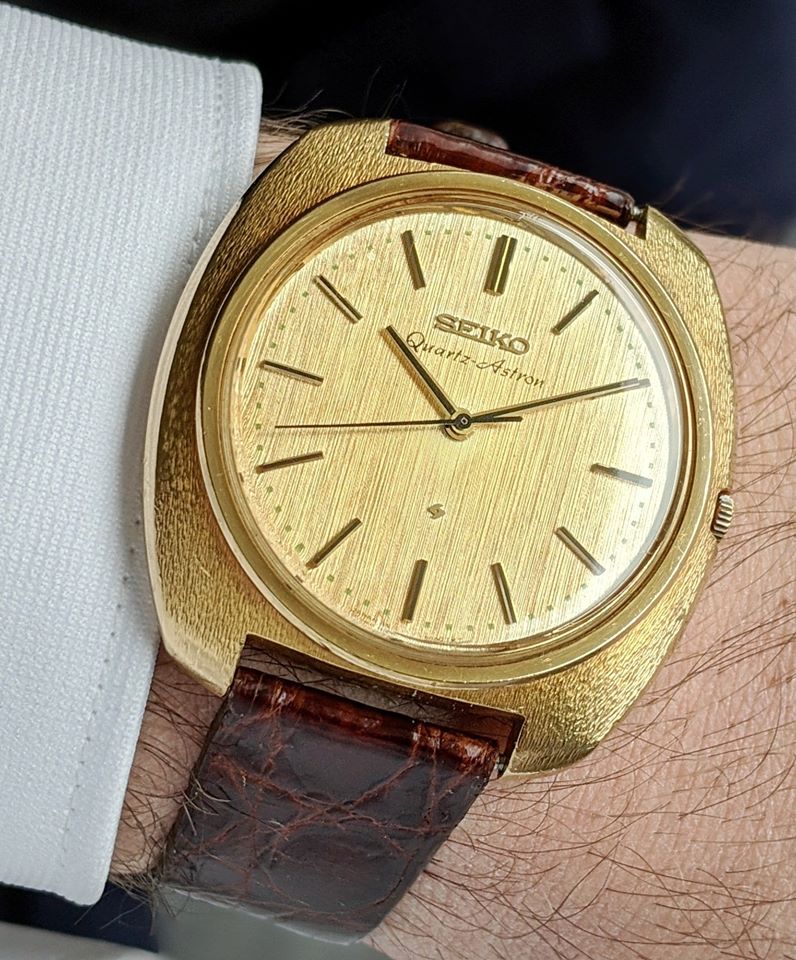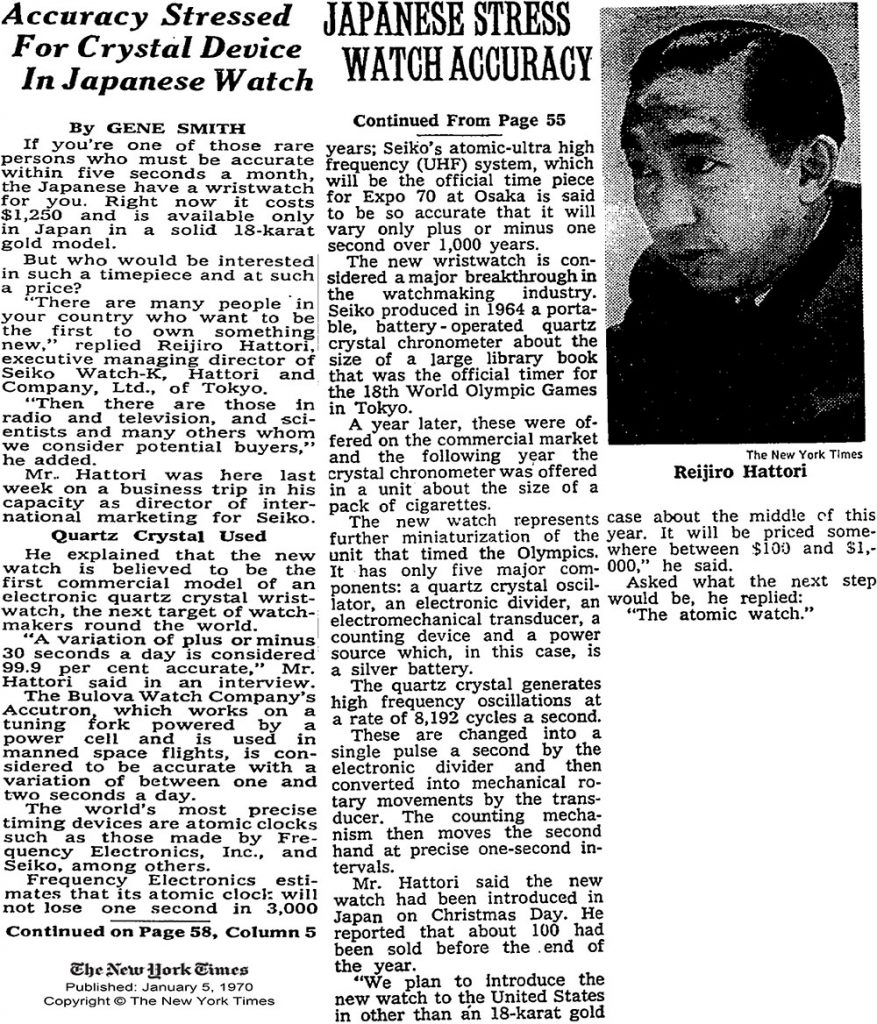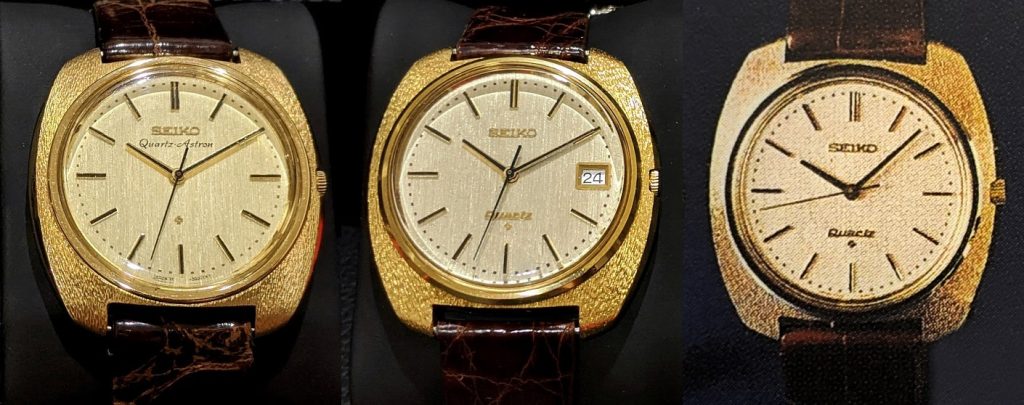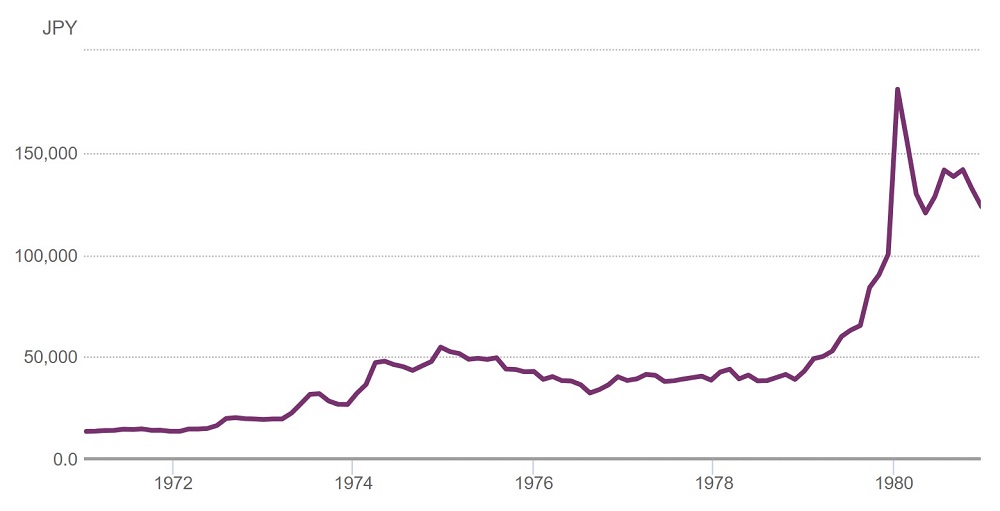The Seiko Quartz-Astron 35SQ can be considered the most important timepiece of modern horological history. So it’s no surprise to see a lot of articles and books discussing it and its impressive legacy.

When you read about the Quartz-Astron, one of the first things you’ll probably learn is that only a limited edition of 100 or, depending on the source, around 200 pieces were produced.
Let’s start with two of the most authoritative sources that speak of a limited edition of 100 pieces.
The book, A Journey in Time: The Remarkable Story of Seiko by John Goodall, says in chapter six: “the first Astron quartz watch was sold on Christmas Day 1969 […] produced in a limited edition of only 100 pieces.”
Seiko itself, in a press release from December 2009, says “The Quartz Astron was presented in an 18 carat gold case and went on sale in Tokyo on December 25, 1969 in a limited edition of just 100.”
Then we have a couple of other notable sources claiming that 200 pieces were produced.
In a more recent article published on Hodinkee and Bloomberg, the author Jack Forster writes, “The Astron was very much a first-generation effort (…) and it was very expensive; Seiko only made 200 of them and they were sold only in Japan.”
From an article on Wristview: “The Quartz Astron 35 SQ watch had a battery life of one year. It was also very expensive to buy and only sold in Japan with a limited production of 200.”
I want to emphasize that those mentioned are just some of the most relevant sources, and that the same informations are found on many websites, magazines and books.
The importance of serial numbers
One day, while looking at some auctions going on in Japan, I was lucky enough to come across one of the very rare Quartz-Astron specimens. Examining the piece, my attention was captured by the serial number.
The serial number, as you probably know, can reveal much useful information: the first digit tells the production year; the second digit, the month (1,2,3,4,5,6,7,8,9,O,N,D); and the remaining digits tell us the number of the watch inside its production run.
I noticed that my Quartz-Astron was produced in April 1970. But how was that possible if even Seiko said it was a limited edition of only 100 pieces released in December 1969?
My curiosity led me to do an in-depth research, to understand how many Quartz-Astrons were actually produced, and why there is confusion about such a historically relevant watch.
The origin of the 100 Limited Edition’s myth
After spending hours searching through old publications, my attention fell to a New York Times article published on January 5 of 1970, just over a week after the Quartz-Astron debut in Tokyo stores.
Reijiro Hattori, then Seiko’s executive director, said that about 100 had been sold before the end of 1969. From the article it is clear that 100 was originally reported only as an approximation of the pieces sold in the week following the market launch.

It is likely that, following Hattori’s statements, which surely were reported in different languages in various publications around the world, somebody misinterpreted or mistranslated Mr. Hattori’s words, creating the false myth of a 100 limited edition.
The Quartz-Astron 35SQ was never meant to be a limited edition, and production of the first model, although it lasted for a short period of time as we will see shortly, continued for a few months after launch.
The myth of a 100 limited edition became so widespread that apparently even people inside Seiko believed it in later years, as evidenced by the 2009 press release mentioned earlier.
It is less clear from what exactly the other thesis of the 200 specimens originated, but I found a publication in the British Journal for the History of Science, entitled “Engineering time: inventing the electronic wristwatch”, in which the authors cite among their sources a 1999 interview to Tsuneya Nakamura, the man leading the team that developed the Quartz-Astron. Unfortunately, the text does not report Nakamura’s exact words.
In search of the Quartz-Astron
In the absence of verifiable information on production numbers, the serials can help us get an idea. So I went in search of the Quartz-Astron watches of which there is any trace.
I started with books and magazines with photos of Quartz-Astron specimens, some of which are pieces exhibited in museums, to continue with the auctions held in Japan and around the world in recent decades. I was also able to find some of the greatest watch enthusiasts and collectors, who own the world’s first quartz.
In my research I found the serial numbers of 19 examples of the first model with the Quartz-Astron writing on the dial, plus another 13 of the version with date, and 2 of the version with the alternative dial.
These last two versions were launched by Seiko in early 1970, shortly after the first Quartz-Astron, and they share the same case-movement reference, 35-9000.
Before start to do the math, it is important to consider that from January 1970 the three gold variants of the Quartz-Astron, including the first model, were produced together. The production numbers revealed by the serial numbers are therefore inclusive of all three versions, and not just the first one.

The following table is representative of the specimens I was able to track down.
| November 1969 | 6 specimens (6 first model). Highest serial: 9N0048 |
| December 1969 | 0 specimens |
| January 1970 | 3 specimens (1 first model, 1 date, 1 alternative dial). Highest serial: 010017 |
| February 1970 | 9 specimens (7 first model, 2 date) Highest serial: 020086 |
| March 1970 | 0 specimens |
| April 1970 | 10 specimens (3 first model, 7 date) Highest serial: 040195 |
| May 1970 | 1 specimen (1 date) Serial: 050015 |
| June 1970 | 5 specimens (2 first model, 2 date, 1 alternative dial) Highest serial: 060098 |
What these data reveal
The highest serial among the Quartz-Astron produced in November 1969 that I have tracked down is the number 48, but if we accept the fact that before the end of the year about 100 were sold, as stated by Mr. Hattori in the New York article Times, it means that about 100, at a minimum, must have been produced by the end of 1969.
In January 1970, the version with date and the version with an alternative dial of the Quartz-Astron, were already in production. The first model with the Quartz-Astron writing also continued to be produced.
Of all three gold cased versions of the Quartz-Astron, at least 17 specimens were produced in January 1970, at least 86 in February 1970, at least 195 in April 1970, at least 15 in May 1970, and at least 98 in June 1970.
What can we assume
Production of the first Quartz-Astron appears to have started in November 1969. In January 1970, the date version and the alternate dial version went into production. All three versions of the Quartz-Astron with a gold case appear to have been manufactured for a few months, until June 1970.
The serials of April 1970 suggest that Seiko, at least at that time, was able to produce about 200 pieces per month, it is therefore conceivable that a similar quantity was produced in the following and previous months, but in the absence of other evidence we cannot be sure.
Based on what I was able to find, I think the total of the three versions with the gold case was around 1500 pieces produced. Of these, probably more than a third were of the first version, therefore something more than 500 pieces.
These latter numbers cannot be confirmed without further evidence, but I am convinced that they are very close to the reality of how many Quartz-Astron were produced.
How many Astron are still around today?
How many pieces have survived more than 50 years and are still in existence today, it’s a completely different matter. The very few examples that I was able to find in my long search leave no doubt about the rarity of this timepiece, which is the grail watch of many collectors.
As we have seen, Seiko only produced the Quartz-Astron for a few months and in small quantities, but a combination of events between the 1970s and 1980s probably contributed to further reducing the number of existing examples.
Between the 70s and 80s, there was a big spike in the price of gold, as we can see in the following chart. At a time when the Astron wasn’t yet perceived as an item of great historical or collectible value, the price of the gold present in the watch case was higher than the value of the watch itself, so it’s understandable that many of the pieces were probably melted for the gold weight after a decade of usage.

We can’t know for sure, but considering the significant increase in gold prices between the 70s and 80s, plus the well known fact that the 35A caliber was prone to breakage, it’s likely that a considerable percentage of them have been lost.